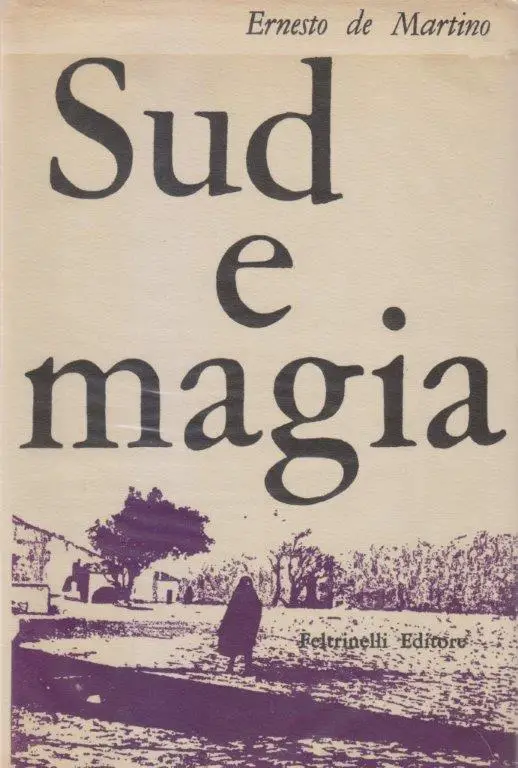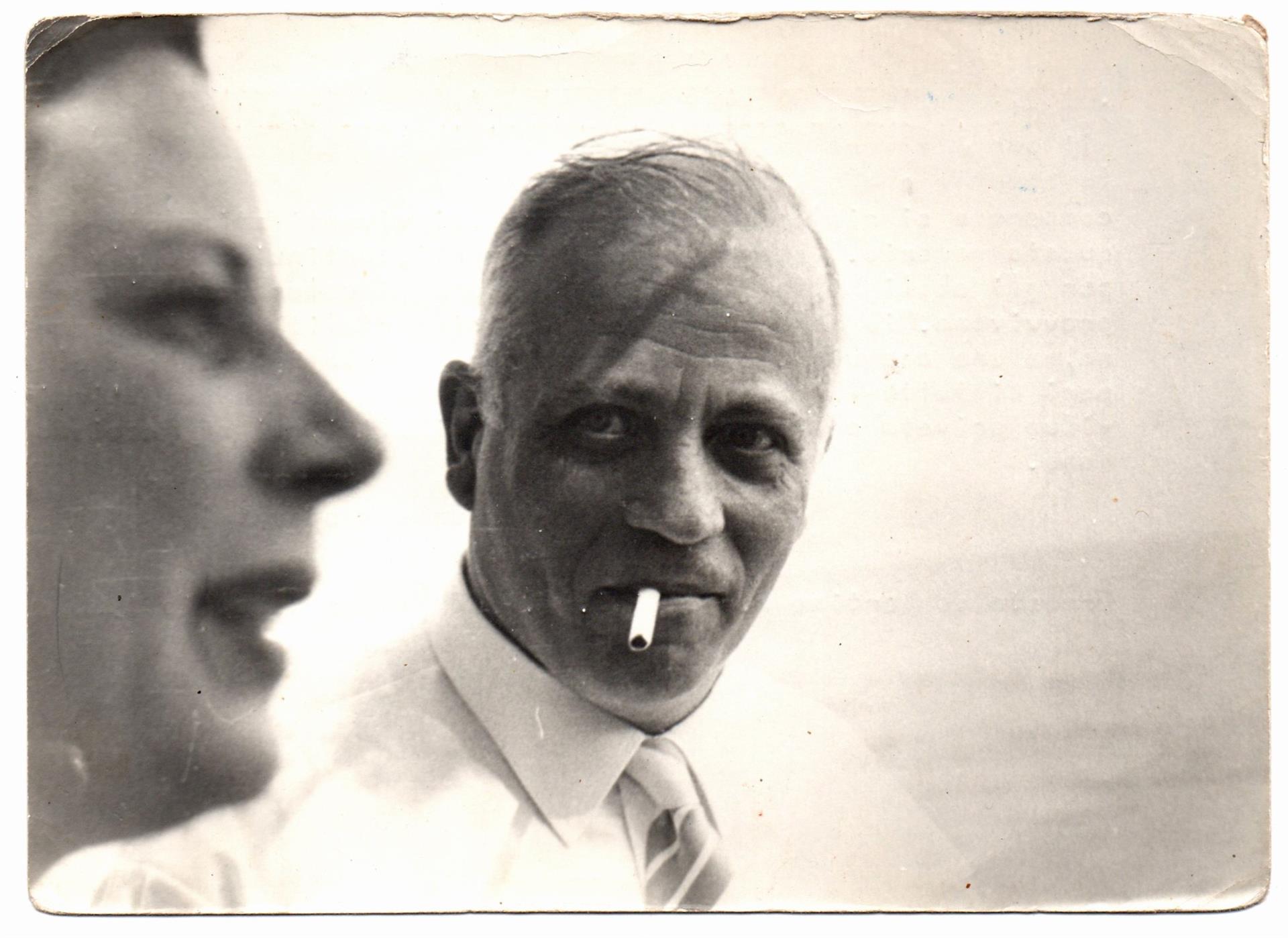Italy and in particular the South still experience a strong presence of archaic practices of a magical-religious matrix: this is the field of investigation in which the studies of Ernesto de Martino, a Neapolitan anthropologist known for having documented in the first person and for having interpreted the customs and beliefs (such as the evil eye and the fascination, the workmanship and the jetting) of which southern society is still pregnant today.
di Federica Zigarelli
South and Magic is one of the so-called southern works of Ernesto DeMartino, together with Death and pRitual plant in the ancient world e The land of remorse. The organization chosen by the author in the treatment of the subject is bipartite, so that a first ethnographic section is followed by a more properly historiographic part.
The first section documents magical-religious customs and beliefs recorded from 1950 to 1957 during various ethnographic explorations in some Lucanian villages: the fulcrum of the Demartinian investigation is charm (or fascination or evil eye or hex), a condition involving an agent (a natural person or an evil spirit) and a victim shaken by. Initially the author describes practices and rites of low ceremonial magic, also including recited formulas for invoices and counter-invoices and distinguishing these practices by type: in "Fascination and eros" some fears and precautions are reported at the basis of wedding rites, such as the fear of relatives for reading the Gospel of Luke - considered an ominous sign for the couple - or the care to place a broom next to the door of the bridal chamber, so that the charm is forced to count every thread of sorghum and 'yes you disdain ››.
In "Childhood and fascination" some practices aimed at strengthening children's health are mentioned, such as the baptism of wine, which would have a corroborating effect: after bathing in lukewarm wine it had to be thrown on the street or in the home to make the world propitious for the boy or the house for the girl; the face of the child could be sprinkled with the dust of the main beam of the house to make it stable and strong or a nail was driven into the place of birth so that the newborn was anchored to the waist and was as firm as the nail, in short, these are rites that can be connected now at the sympathetic magic now to the contagious one.

Fascination can be voluntary - think of the love potion deliberately created to bind a man to himself - or involuntarily. For the latter case, an involuntary tale is interesting fascination with milk: De Martino attests to the popular belief that women have the power to Voluntarily "stealing" milk of the breasts of others with particular precautions or with simple contact, but beyond the voluntary cases a local woman tells of a girl who suddenly found herself without milk due to the lustful gaze of a passer-by who had accidentally spotted her while she was nursing her child . The man would realize what had happened when her chest swelled with milk and he would come back to return her stolen goods to her mother through a counter-invoice formula: "I have your milk: give me a slice of bread. Now I take a bite of it and you tear it off me saying 'Give me my bread' ››.
Fascination can therefore also occur involuntarily and often only through the gaze: in many formulas against the invoice the element of the malevolent eye is remembered (think of the Neapolitan nursery rhyme "Uocchij, maluocchij, parsley and fennel, allee, fravaglie, made with nun quail").
After the initial ethnographic collection, De Martino tries to offer a valid reason to explain the diffusion - especially in the South - of the belief in fascination, of its eventual expression in exasperated and paroxysmal forms such as hallucinations and the possession (remember cases of nocturnal ligatures: people who woke up bruised or tied to bed or who would have experienced a state of conscious paralysis during the night physical harassment of spirits or macare, sorcerer).

The author links this to the crisis of presence (also called "psychological misery"), where presence indicates being in full possession of the ability to act and choice, but also the set of habits and ideas that viscerally bind the individual to his community of belonging, ultimately the very identity of a person . La crisis provokes a disintegration of the individual presence, an emptying of oneself, the individual loses the power of decision and choice and experiences a condition of estrangement and alienation; this condition causes the victim to feel like be acted upon by, of no longer being in control of himself, but at the mercy of "an occult agent".
"Psychological misery" is caused by a number of negative factors: hunger, disease, death, the precariousness and fatigue of peasant life (it is emphasized how many hallucinations, for example the so-called mass of the dead, occur at dawn or at night when the peasants head to or return from work in the fields). Faced with the historical negativity of the impending future, the community tends to protect itself through the destorification of the negative and of becoming: magical practices so rooted in southern low culture and linked to fascination (invoices, counterfactures, exorcisms, rites) are nothing more than socialized and traditionalized forms with a protective purpose, that is, they must defuse the negativity of everyday life by creating a world in which individuals can live peacefully and defend the individual presence from the crisis, or remedying it through practices that reintegrate the individual into the collective order.
The magical practice, the rite, is only apparently the moment of the anomaly, but on the contrary it appears functional to reabsorption of the negative in the pre-established order and in the cultural reality: the ultimate goal is to create a destorified dimension in which the negative is annihilated, where diseases are cured effectively, where marriage marriages are fruitful, where mothers have enough milk to feed the children and the latter are healthy and strong.

In the more properly historiographical section, De Martino reviews the points of view of previous writers who have dealt with southern fascination and focuses in particular on Neapolitan jetting. Mention is made of the Protestant wave that with Theodor Trede tried to show how the Italian South was substantially still pagan and Catholicism had been defeated by it: "the old wine is left in the bottle, only the label has changed". Trede notes that the basis of many Catholic cults has a pagan origin: in this perspective a strong anti-Catholic controversy emerges, unmasked by De Martino and criticized in two moves.
In the first place although there is a pagan fund in the religiosity of southern Italy, it can be easily found in all Christianized territories since the Church recovered previous cults almost everywhere, even in Germany itself, which Trede mistakenly considers almost detached from these ancient reminiscences: De Martino ironizes on this, recalling how they are still attested in German territory as many deeply rooted magical and esoteric practices. Secondly, against the theory - we could say continuistic - of Trede (who sees in southern Italy a lasting persistence and resistance of ancient Greco-Roman paganism), De Martino prefers to speak of syncretism and compromise between archaic magic and hegemonic religiona combination often supported by members of the same clergy.
To make it easier to memorize the commandments, the latter were inserted in some counter-invoice formulas, to help overcome the headache the raising of the cross of Jesus became theexample formulate ("Arise headache as the sun rises, as our Lord was lifted up on the cross") and in general Christ, the Trinity, Our Lady and other saints entered in all respects into magical-religious practices; even the love potions had to be consecrated in church during mass to give them the necessary power and it is said of a priest who voluntarily made his parishioners believe that he had power over meteorological phenomena. In short the South is not pagan stricto sensu, but archaic magic and hegemonic religion overlapped, even if in forms that are not strictly official and canonical.
[Youtube https://www.youtube.com/watch?v=COQBPLMzkQY&w=800&h=600%5D
In the last part of South and magic De Martino investigates the Neapolitan belief in jettison, tracing its origin back to the second half of the eighteenth century when the Enlightenment current also reached Naples and the South, which however had different declinations here: while in the countries of origin the Enlightenment called intellectuals to a choice between magic and rationality (from which modern society would later be born, as the anthropologist points out), in Naples this argument was not supported by significant contributions. The advent of the Enlightenment in Naples instead had as a consequence the delineation of an ambiguous attitude, mixed between serious and facetious towards fascination and jetting (summarized in "it's not true but I believe it"): we arrived at "a practical compromise resolution between the ancient witchcraft charm, the charm of natural magic and the themes of eighteenth-century rationalism››, ‹‹ an ambiguous compromise between joking skepticism and scrupulous credulity ››.
In the South it was decided not to oppose in whole magic and superstition deeply rooted, but at the same time not "officially" accepted; all this resulted in an intermediate stage in which the belief in charm and jetting were mocked, but at the same time the fear of possible hexes and evil eyes was still felt and well attested not only in the popular classes, but also in the emerging one: Ferdinand I and Ferdinand II were particularly superstitious and there were even those who attributed the cause of the fall of the Bourbons to a "national" jettatore, the Duke of Ventignano.

4 comments on “South and Magic: the South between archaisms and historical precariousness"